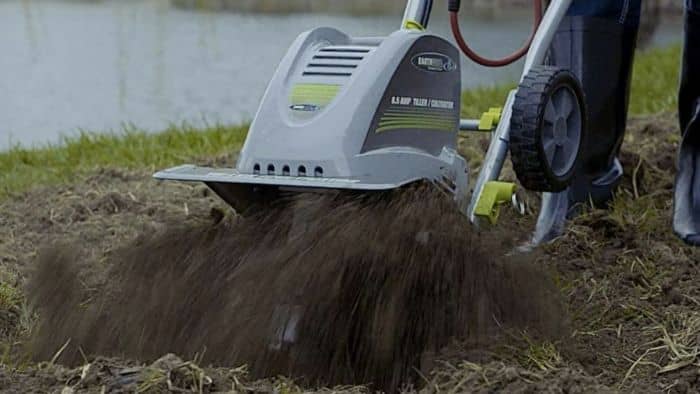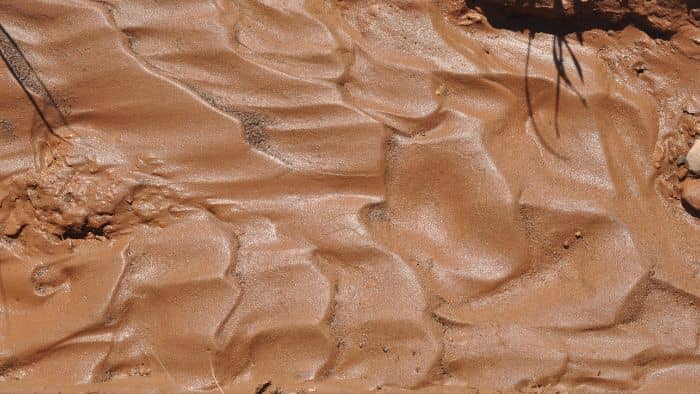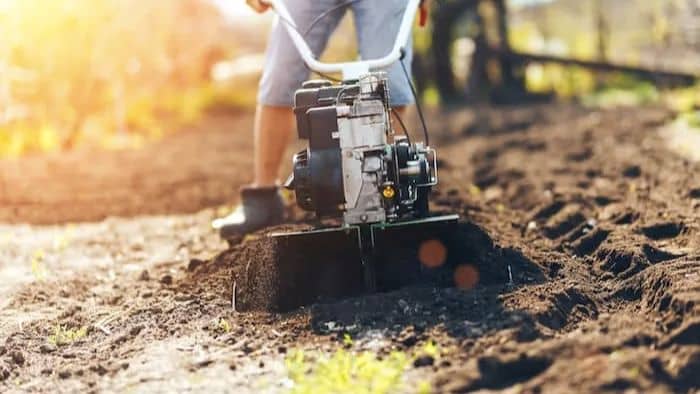Are you having a difficult time choosing the Best Rototiller for Clay Soil? In this article, you will find everything you need to know about choosing the one that best suits your need. A piece of agricultural machinery used for secondary tillage is a cultivator also known as a rototiller. The name can also refer to frames that drag through the ground linearly while having teeth that penetrate them.
It is a description of devices that achieve the same outcome through rotating disks which is useful to gardeners as it makes the job of tilling much easier. This is because it churns your garden soil into a fine, clod-free bed that will be ready for planting. Also, by adjusting the skid shoes, you can change this effective tools working depth.
Even though most cultivators find it easy to manually dig down far enough, if your clay soil is particularly compact, a garden tiller might be more effective. Your plants’ roots will grow healthily if you give them a depth of six to eight inches. The beginning of the growing season, before you’ve planted your seeds, is the ideal time to do this. Let’s go through a few essential tips below to see which rototiller best suits you.
Best Electric Tiller For Clay Soil
A garden with healthy, loose soil is usually suitable for the majority of plants that like growing on fine aerated ground. Unfortunately, it can take a lot of manual labor to turn hard, compacted soil into the ideal setting for growth. This is especially true if the area is new and has never seen the tender loving care of a gardener. Unless you use a rototiller, that is.
With the help of a series of blades, this tool will loosen and aerate dense soil. This will enable correct drainage to preserve sufficient moisture and keep plants hydrated. Additionally, these gardening tools foster an atmosphere that is suitable for symbiotic species like good bacteria and worms. Therefore using the best rototiller for clay soil is essential for your application.

Here Are Two Of Our Best Picks:
Corded Electric Tiller/Cultivator by Earthwise TC70016 – Best Electric Option
This tool has six steel tines that can till a 16-inch-wide swath 8 inches deep. It also comes with a strong 13.5-amp corded electric motor that is efficient. It is a great option for breaking new ground, especially in soils with a lot of clay.
X2-TLR14 Sun Joe Garden Tiller/Cultivator – Best Cordless Option
This Sun Joe tiller offers short recharge times and a powerful 48V performance, thanks to its dual 24V rechargeable batteries. With movable wheels that allow for depth adjustment, it tills a 14-inch swath up to 7 inches deep. Both batteries may be charged simultaneously in about 55 minutes using the dual-port charger that is included. Safety is increased by a one-handed start-stop control.
How To Till Clay Soil
There are several ways that you can opt for to till clay soil. The most traditional option would be to do it manually, which requires a lot of elbow grease, time, and sweat. On the other hand, there are tools available that can make the job much easier. Using the best rototiller for clay soil will get the job done in minimal time without the implementation of hard labor. That I would say, is a great option, especially if you have a large patch of land to cultivate.
However, in comparison to other soil types, you will need to significantly reduce the amount of tilling you undertake if you are going to cultivate clay soil. Although you may be accustomed to this procedure increasing your soil’s composition and porosity right away, clay doesn’t quite behave in the same way. This is because it is frequently disturbed by tilling because it encourages the growth of weeds and eliminates a large number of earthworms, which are important for maintaining the growing mediums’ nutrients.
Therefore, if you are preparing clay soil for farming, you might want to till it once after adding your compost. Sand should be incorporated into the top 8 to 12 inches of soil using this effective garden tool. Also, the addition of sand will increase the volume of your soil substantially. If you’re working on a bed that cannot be widened or raised in height, you might need to remove part of the clay soil before you start the amendment procedure. However, when tilling, keep in mind that It will take a lot of sand to significantly alter the texture of clay-rich soil.

What Size Tiller do I Need
Your garden’s size is a good place to start when figuring out how big of a tiller you need. Most mini-tillers can operate smaller gardens that are less than 1,500 square feet in size. However, there are various sizes, types, and makes available to suit your specific application.
Whether it is a battery-operated or electric one, make sure that the rototiller you buy is capable of efficiently churning the ground in your yard. Listed below are a few suggestions to help you get the best rototiller for clay soil or heavily compacted ground.
Suggestions:
1. A 5- to 6-horsepower tiller is sufficient for medium-sized gardens.
2. If you have a large garden, you’d require a tiller with at least a 6-horsepower engine.
3. You would likely need a mid-size tiller with a 5-horsepower engine for a medium-sized garden.
4. A heavy-duty tiller with at least a 6-horsepower engine for gardens of more than 5,000 square feet would be ideal.
5. Heavy-duty tillers frequently come with add-ons, like wagons or wood chippers. They are perfect for someone with a sizable yard and numerous cultivation projects.
6. For aerating loam and yearly garden upkeep, medium-sized tillers are also quite effective.
7. Established beds can be prepared with ease with small tillers. Many compact tillers come with grass edgers or cultivators for weeding gardens.

How to Work a Tiller
After finding the best rototiller for your garden, you will need to know how to use it. Seeing that they come with user manuals, sometimes understanding how to work a tiller can be intimidating. However, there is no need to fret as we have some great tips below that will aid you in getting the most out of this garden tool.
To maintain a healthy garden with happy plants, excellent air circulation and moisture retention and drainage properties are a must. With the help of a proper tiller, these important aspects can be easily achieved.
Tips:
- To begin with, the handle levers on your machine should be raised.
- When the motor is turned on, squeeze the levers under each handle to turn the tines into action.
- Also, you can steer a tiller with its tines facing forward by pulling on the handle. You will need to pull back on the handles while pushing down to raise them out of the ground.
- The tines will start to churn the earth as you press them into the ground. Keep the tiller tipped at the same depth while moving forward at a walking pace.
- Check the tilled region while moving counterclockwise. Repeat the procedure, working in the opposite way, after tilling the entire area once and going over each row.
- If you initially tilled in horizontal passes, for the next round, till in vertical passes.
- Release the levers under the handles to stop the tines from moving once you have finished tilling the soil.
- Thereafter, flip the engine switch to turn the machine off.
If you want to learn about softening clay soil without tilling, here’s a great video.
Conclusion
If you imagine vegetable gardens and flower beds outside your windows but find clay in your way, this soil type might make you doubt whether it can come true. However, clay soil can be effectively improved as all it needs is a rototiller and some perseverance.
You might be able to reap the benefits of your labor in as little as two growing seasons, depending on how compacted your soil is. Before tilling, make sure to allow the wet soil to dry out. To make things simpler, irrigate the work area with a garden hose and allow it to dry for a few days before churning.
Tilling speeds up the process of establishing garden beds. To choose the best rototiller for clay soil in your yard, consider your garden’s requirements as well as your other favorable objectives. Ensure that the tool you choose is capable of covering the area you want to cultivate. Click on the link to learn more about the benefits of tilling.


